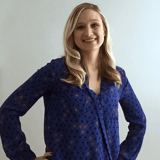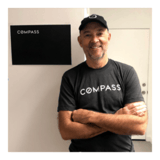Summary
On the second day of the Design Operations Summit 2022, Bria, the host and curator, guides attendees through the conference structure and logistics, emphasizing the importance of community participation and inclusivity. She details how to navigate the program page, outlines the separation of main and sponsor sessions, and encourages attendees to invite others to sponsor talks, which are free and content-rich. Bria thanks sponsors like Verizon, SpokenWheel, and Balsamiq for their essential support and shares information about the digital swag bag via a QR code. She highlights Slack as the core platform for discussion, questions, and support, stressing the importance of thread organization for efficient communication. Bria also explains the value of cohorts—small groups of attendees engaging deeply with the content—and encourages first-timers to join them in future conferences. She introduces David Nicholson as the scribe responsible for session notes and resources, assuring attendees that note-taking is unnecessary. Finally, Bria reminds the community about the code of conduct and support channels to ensure a positive virtual experience. The session closes with a preview of the final panel featuring curators, where attendee input via FigJam will shape the conversation about the future of design operations.
Key Insights
-
•
The Design Operations Summit divides content across main and sponsor programs, with sponsor sessions free and non-overlapping to increase accessibility.
-
•
Slack is the central hub for community interaction, speaker Q&A, and customer support during the conference.
-
•
Organizing questions in speaker-specific Slack threads helps manage the high volume of inquiries and maintains productive conversations.
-
•
Cohorts of 14-15 attendees foster deeper engagement and are among the conference’s most valued experiences.
-
•
Digital swag bags provide tangible attendee benefits even in virtual conference settings, replicating physical event perks.
-
•
Real-time note-taking is unnecessary as detailed session notes, sketches, videos, and resources are promptly published post-session.
-
•
Sponsors ranging from Verizon to Balsamiq play a critical role in enabling the conference, highlighting the value of industry partnerships.
-
•
The conference maintains a strong community focus by enforcing a code of conduct and providing dedicated help channels to ensure safety and inclusivity.
-
•
Time zone adjustments on the program page help global attendees avoid missing sessions, emphasizing inclusivity and convenience.
-
•
The final panel is designed to synthesize learnings from the two-day event and incorporate participant feedback via collaborative tools like FigJam.
Notable Quotes
"We could not have this conference without you all — the curation team relies heavily on audience participation."
"Sponsor sessions are not sales pitches; they are content-rich and free to anyone who wants to attend."
"Take advantage of the digital swag bag — it’s our way of replicating in-person perks in a virtual world."
"Slack is the heart and soul of this conference — that’s where you ask questions, get help, and connect with others."
"Please keep your questions within the speaker’s thread so we don’t lose track of them in the busy chat."
"Cohorts are consistently one of the highest rated parts of the conference — they’re a fantastic way to learn together."
"No need to take notes — our scribe David Nicholson is capturing detailed session notes and insights for you."
"Respect and kindness are mandatory; please read our code of conduct to ensure a positive community experience."
"The program page has a time zone selector so everyone can attend sessions on their local time without confusion."
"The final panel will be grounded in your input from this summit — we want to hear from you in the FigJam link."
Or choose a question:
















More Videos

"I believed we could do more — more for the company, customers, stakeholders, and ourselves if we had more agency."
Nalini KotamrajuResearch After UX
March 25, 2024

"Society grows great when old people plant trees they know they shall never sit in."
Dean BroadleyNot Black Enough to be White
January 8, 2024

"We’re not going for perfection. We’re going for excellence and change."
Denise Jacobs Nancy Douyon Renee Reid Lisa WelchmanInteractive Keynote: Social Change by Design
January 8, 2024

"Reporting progress with data and stories opens up opportunities with stakeholders and builds credibility."
Kim Fellman CohenMeasuring the Designer Experience
October 23, 2019

"Not every project needs to be responded to; not every RFP needs a proposal."
George AyeThat Quiet Little Voice: When Design and Ethics Collide
November 16, 2022

"Short-term pairings with different design people help bring back contributions into the central system."
Nathan CurtisBeyond the Toolkit: Spreading a System Across People & Products
June 9, 2016

"If agents do well, we do well. The more we know about you, the more we can make you better or fulfill your goals and aspirations."
Greg PetroffThe Compass Mission
March 10, 2021

"Global and local cultures are closely entwined and always influencing one another."
Chloe Amos-EdkinsA Cultural Approach: Research in the Context of Glocalisation
March 27, 2023

"Agile can feel like a cult, but the data helps show it’s working and not just a belief system."
Mackenzie Cockram Sara Branco Cunha Ian FranklinIntegrating Qualitative and Quantitative Research from Discovery to Live
December 16, 2022
Latest Books All books
Dig deeper with the Rosenbot
What are effective performance measurement strategies for small organizations with limited resources?
How can service design artifacts like customer journey maps risk becoming just check-box exercises?
How can frontline staff be meaningfully involved in designing and implementing AI-powered services?
















